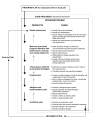Intervention mapping for development of a participatory return-to-work intervention for temporary agency workers and unemployed workers sick-listed due to musculoskeletal disorders
- PMID: 19573229
- PMCID: PMC2718881
- DOI: 10.1186/1471-2458-9-216
Intervention mapping for development of a participatory return-to-work intervention for temporary agency workers and unemployed workers sick-listed due to musculoskeletal disorders
Abstract
Background: In the past decade in activities aiming at return-to-work (RTW), there has been a growing awareness to change the focus from sickness and work disability to recovery and work ability. To date, this process in occupational health care (OHC) has mainly been directed towards employees. However, within the working population there are two vulnerable groups: temporary agency workers and unemployed workers, since they have no workplace/employer to return to, when sick-listed. For this group there is a need for tailored RTW strategies and interventions. Therefore, this paper aims to describe the structured and stepwise process of development, implementation and evaluation of a theory- and practise-based participatory RTW program for temporary agency workers and unemployed workers, sick-listed due to musculoskeletal disorders (MSD). This program is based on the already developed and cost-effective RTW program for employees, sick-listed due to low back pain.
Methods: The Intervention Mapping (IM) protocol was used to develop a tailor-made RTW program for temporary agency workers and unemployed workers, sick-listed due to MSD. The Attitude-Social influence-self-Efficacy (ASE) model was used as a theoretical framework for determinants of behaviour regarding RTW of the sick-listed worker and development of the intervention. To ensure participation and facilitate successful adoption and implementation, important stakeholders were involved in all steps of program development and implementation. Results of semi-structured interviews and 'fine-tuning' meetings were used to design the final participatory RTW program.
Results: A structured stepwise RTW program was developed, aimed at making a consensus-based RTW implementation plan. The new program starts with identifying obstacles for RTW, followed by a brainstorm session in which the sick-listed worker and the labour expert of the Social Security Agency (SSA) formulate solutions/possibilities for suitable (therapeutic) work. This process is guided by an independent RTW coordinator to achieve consensus. Based on the resulting RTW implementation plan, to create an actual RTW perspective, a vocational rehabilitation agency is assigned to find a matching (therapeutic) workplace. The cost-effectiveness of this participatory RTW program will be evaluated in a randomised controlled trial.
Conclusion: IM is a promising tool for the development of tailor-made OHC interventions for the vulnerable working population.
Figures




Similar articles
-
Cost-effectiveness of a participatory return-to-work intervention for temporary agency workers and unemployed workers sick-listed due to musculoskeletal disorders: design of a randomised controlled trial.BMC Musculoskelet Disord. 2010 Mar 28;11:60. doi: 10.1186/1471-2474-11-60. BMC Musculoskelet Disord. 2010. PMID: 20346183 Free PMC article. Clinical Trial.
-
A participatory return-to-work program for temporary agency workers and unemployed workers sick-listed due to musculoskeletal disorders: a process evaluation alongside a randomized controlled trial.J Occup Rehabil. 2012 Mar;22(1):127-40. doi: 10.1007/s10926-011-9314-4. J Occup Rehabil. 2012. PMID: 21656252 Free PMC article. Clinical Trial.
-
A participatory return-to-work intervention for temporary agency workers and unemployed workers sick-listed due to musculoskeletal disorders: results of a randomized controlled trial.J Occup Rehabil. 2011 Sep;21(3):313-24. doi: 10.1007/s10926-011-9291-7. J Occup Rehabil. 2011. PMID: 21336673 Free PMC article. Clinical Trial.
-
Return-to-work interventions for sick-listed employees with burnout: a systematic review.Occup Environ Med. 2023 Sep;80(9):538-544. doi: 10.1136/oemed-2023-108867. Epub 2023 Jul 27. Occup Environ Med. 2023. PMID: 37500536 Free PMC article.
-
Evidence-informed decision about (de-)implementing return-to-work coordination to reduce sick leave: a case study.Health Res Policy Syst. 2022 Feb 14;20(1):19. doi: 10.1186/s12961-022-00823-4. Health Res Policy Syst. 2022. PMID: 35164766 Free PMC article. Review.
Cited by
-
Development of a self-management program for employees with complaints of the arm, neck, and/or shoulder: an intervention mapping approach.J Multidiscip Healthc. 2015 Jul 1;8:307-20. doi: 10.2147/JMDH.S82809. eCollection 2015. J Multidiscip Healthc. 2015. PMID: 26170689 Free PMC article.
-
Improving work for the body - a participatory ergonomic intervention aiming at reducing physical exertion and musculoskeletal pain among childcare workers (the TOY-project): study protocol for a wait-list cluster-randomized controlled trial.Trials. 2018 Jul 31;19(1):411. doi: 10.1186/s13063-018-2788-z. Trials. 2018. PMID: 30064464 Free PMC article.
-
Managing disabled workers due to occupational accidents in Indonesia: a case study on return to work program.BMC Public Health. 2023 May 24;23(1):943. doi: 10.1186/s12889-023-15930-2. BMC Public Health. 2023. PMID: 37226117 Free PMC article.
-
Interventions Developed with the Intervention Mapping Protocol in Work Disability Prevention: A Systematic Review of the Literature.J Occup Rehabil. 2019 Mar;29(1):11-24. doi: 10.1007/s10926-018-9776-8. J Occup Rehabil. 2019. PMID: 29948471
-
Designing studies and reviews to produce informative, trustworthy evidence about complex interventions in rehabilitation: a narrative review and commentary.Eur J Phys Rehabil Med. 2024 Dec;60(6):1088-1099. doi: 10.23736/S1973-9087.24.08459-4. Epub 2024 Jun 26. Eur J Phys Rehabil Med. 2024. PMID: 38922317 Free PMC article. Review.
References
-
- Inspectie voor Werk en Inkomen [Inspection for Work and Income] Vangnet of springplank? De reïntegratie van zieke werknemers zonder dienstverband door UWV [Safety net or stepping stone? Vocational rehabilitation of sick-listed workers without an employment contract by the Social Security Agency] Den Haag: IWI; 2005.
-
- Lambeek LC, Anema JR, van Royen BJ, Buijs PC, Wuisman PI, van Tulder MW, van Mechelen W. Multidisciplinary outpatient care program for patients with chronic low back pain: design of a randomized controlled trial and cost-effectiveness study. BMC Public Health. 2007;7:254. doi: 10.1186/1471-2458-7-254. - DOI - PMC - PubMed
Publication types
MeSH terms
LinkOut - more resources
Full Text Sources
Medical
Research Materials
Miscellaneous

